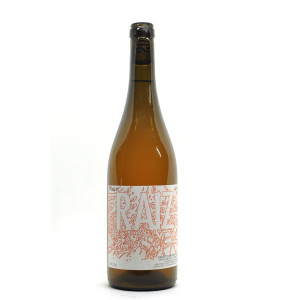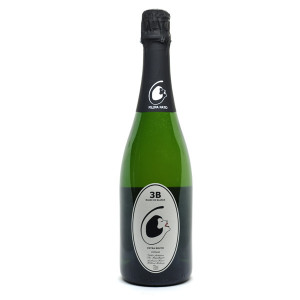Portugal
Portugal is famous in the world for being the homeland of the Port and Madeira Wine but in recent years thanks to a modernization of viticulture and winemaking processes and to safeguard the country's wide ampelographic wealth, there are also interesting both white and red wines. Its wine history is linked to the old trade friendship with England born in 1386 with the Windsor treaty, still today the names of the largest producers in Porto have names with Anglo-Saxon origins. Portugal faces the Atlantic Ocean completely and borders only with Spain. The North area is predominantly mountainous characterized by abundant rainfall with average temperatures of around 10 ° which makes it ideal for white wines production, while in the south of Lisbon there is little precipitation, aridity is high and average temperatures are about 18 ° ideal for red wines. For white wines, grapes of Loureiro and Alvarinho (in the Vinho Verde area), Bical (in the Barraida area), Encruzado (Dao area) and Arinto (in Bucelas) are used, while red wines are used Touriga National (Portugal's best grain used to produce the Port), Baga (in the Barraida area), Castelao Frances and Trincaidera (in the Alentejo area). The highest category of Portuguese denominations is the Denominacao de Origem Controlada (DOC), which is attributed to 19 wine regions and corresponds to our DOCG. The following category is the Indicacao de proveniencia Regulamentada (IPR) which is attributed to 28 regions and can be compared to the IGT. In a lower step we find the Vinhos Regionais and the Vinhos de Mesa. Other references can be found on the label, such as the word "Reserva", which indicates that the wine is of high quality and of a higher alcoholic strength than that laid down by the specification, and Garraferia, in this case the wine aged two years in oak barrels and one year in the bottle if it is red, if it is white six months in barrels and as many in the bottle. The main wine regions are: The Minho is named after the river that borders the border between Portugal and Spain. In this region is produced mainly Vinho Verde, a mone that is indicative of a young and light wine that can be white, red or rosé. The most cultivated variety is Alvarinho, which in Spain is called Albarino, followed by Loureiro, Arinto, Trajadura and Paderna, two very productive vines that produce light and very acidic wines. For the production of red wines, in acids rich in acidity, we use the grapes of Azal, Vinhao and Espadeiro. The district of bairrada is located in the central area of Portugal. Historic area for viticulture production has been cultivated since the beginning of the year thousand. His wines were used to cut the Port that aroused the wrath of the Marquis of Pomabal, who, in order to maintain the purity of the port, ordered to extinguish all the vineyards of Barraida. Today it is mainly cultivated the red berry Baga which originates from structured and rich tannins. The Estremandura is located along the coast of Lisbon and has interesting names such as Carcavelos, which is reserved for a single home, the Quinta do Barao, which produces a very rare liqueur wine with amber color and dried fruit scents. To the north of Lisbon we find the name Colares which distinguishes it because the Ramisco grape is cultivated on the sand dunes. The wine you get is a very tannic red wine and dark red color that needs many years of refinement before being ready. Next to Lisbon, we find the aura of Setubal where a sweet and aromatic wine is produced, the Moscatel de Setbal, from the same grapes. Very interesting is the area of Alentejo, which is located in the south of Portugal. Mostly red berries are cultivated such as Periquita, Trincadeira Preta, Alicante and Aragonez. The wines that are obtained are spicy, soft, fruity and concentrated. Here comes most of the cork exported to the world. The southernmost district of the country is the Algarve known for its liqueur wine and for high-quality red wines based on Periquita and Negra Mole, and the whites from the Crato Bainco grape variety. Green Vinho is produced from Alvarinho, Loureiro and Trajdura grapes in the Minho region, located in the northwest corner of Portugal, a particularly green spot due to frequent precipitation. Green Vinho is a light and fresh wine characterized by high acidity. But the image of Portuguese wine is linked to the Port, liqueur wine obtained by adding fermented spirits. Many types of grapes are used to produce the Port, but the most important are: the Touriga National, Touriga Francesa, Tinta Barroca, Tina Cao, TintoAmarela and Tinta Roriz. The Porto is distinguished by seven types; White, Ruby, Tawny, Aged Tawny, Cohleita, Late Bottle and Vintage Vintage. The Ruby version is the youngest, ruby red with fruity fragrances. The Tawny is aged in oak barrels with a color that tends to have amber nuances, with ripe fruit scents. Vintage is produced in the best vintage and is aged from 2 to 3 years in oak barrels. Late Bottle Vintage comes from an undefined vintage vintage and matures from 4 to 5 years old in barrels. White Porto is obtained from white cod grapes Codega, Gouveio, Mlvasia Fina and Rabigato. But the first port of a Port is to be red, the second to be drunk. Another Portuguese wine legend is Maderia. Produced on the island of Madeira much closer to the African coast than Portugal. The wine is produced using four grapes; the Sercial that from a dry Maderia and delicate aroma, the Verdelho with which wines are obtained with a slightly higher sugar content ranging from a lovable to semi-sweet, Bual to very sweet and complex wines and finally Mamsey from which comes a very sweet, rich and full wine. There is also the Tinta Negra Mole grape variety that takes on the characteristics of the nearby grape variety where it is cultivated. In addition to the fortification in fermentation, the production of Madeira wine provides for heating for a certain period. In the past, this heating naturally came to the equator when the Portuguese ships carried the wine from Brazil to Brazil. Today this process takes place through the use of estufas and the process takes the name of estufagem. The wine is put in wooden barrels and heated to 40-45 ° for a period ranging from 3 to 6 months. This process for the best Maderia happens naturally, in fact, they are left in the attics for a long period of time. For the cheaper ones, instead, heat shakers placed in the steel tanks are used. The types of Madeira are; Common, Finest, Reserve, Special Reserve, Extra Reserve, Solera and Vintage. Vintage is produced only in the finest vintage and aged for decades in oak barrels. It is produced only with white grapes monovitigno, it is the highest level of quality. Solera Madeira and the Special Reserve are obtained through the solera method. The Reserve is obtained through a 5 year wine blend. The Finest provides a three-year wine cut. Finally, the commune that is the most produced, is obtained with a fast. treatment at the Extufagem and comes colored with the caramel. Made almost exclusively with Tinta Negra Mole. Madeira are the longest wines in the world that can reach 200 years of age as well.



